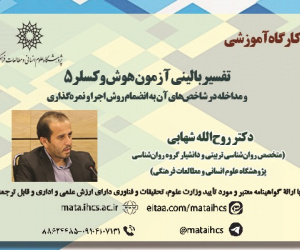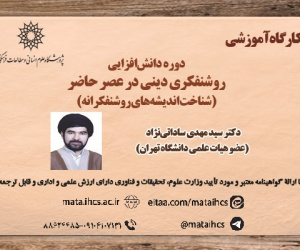معرفی و تصحیح چهارده شعر نویافته از عیاضی سرخسی (مقاله علمی وزارت علوم)
درجه علمی: نشریه علمی (وزارت علوم)
آرشیو
چکیده
عیاضی سرخسی از شاعران گمنام سده پنجم هجری است که با وجود توانایی اش در شاعری، تاکنون تحقیقات محدودی درباره او انجام شده و ابیات پراکنده اش از نظر پژوهشگران مغفول مانده است. پیش از این، مدبری در شاعران بی دیوان، 42 بیت از عیاضی را از منابع گوناگون عمدتاً متأخر استخراج کرده و در تحقیقات دیگر، ابیاتی جدید به نام همین شاعر معرفی شده است؛ هرچند از میان ابیات یافت شده، تنها معدودی به نسخه های قبل از قرن هفتم متعلق بوده است. در این پژوهش، با استناد به نسخه شماره 64 کتابخانه محمد عارف ترکیه مورخ 687-688، 14 غزل و تغزل نویافته و 17 بیت پراکنده شامل 145 بیت از این شاعر معرفی و ذکر شده است. همچنین به روش تحلیل محتوا، برخی از ویژگی های غزل او بیان شده است. نتایج نشان می دهد که عیاضی سرخسی از شاعران تأثیرگذار در سیر غزل قرن پنجم بوده و نوع تصویرسازی او بر تحولات غزل در این قرن تأثیر گذاشته است. همچنین او از اشعار رودکی، فرخی و عنصری تأثیر پذیرفته و در تشخص یافتن تغزل جایگاهی مؤثر داشته است. همچنین براساس اطلاعات موجود، به نظر می رسد عیاضی در اوایل قرن پنجم متولد شده است و نشانه های حیات او تا آغاز ربع چهارم این سده وجود دارد.Introducing and Correcting Fourteen New Poems by Ayazi Sarakhsi and Analyzing his Status in Ghazal Writing
Ayazi Sarakhsi is an obscure poet from the 5th century A.H. Despite his poetic talent, he has received limited scholarly attention and his scattered works have often been overlooked by researchers. In Poets without Divan, Modabberi has compiled 42 verses attributed to Ayazi from various, predominantly later, sources. Additionally, other studies have introduced new poems bearing his name. However, among the identified works, only a few originate from manuscripts predating the 7th century A.H. This research examined Manuscript No. 64 from the library of Mohammad Aref in Turkey dated 687-688 A.H. It introduced 14 new ghazals and 17 scattered verses, totaling 145 verses by this poet. The study employed content analysis to highlight certain characteristics of his sonnets. The findings indicated that Ayazi Sarakhsi was a significant figure in the development of ghazal poetry during the 5th century, with his imagery playing a pivotal role in its evolution. He was also influenced by the works of Roudaki, Farrokhi, and Onsori, contributing to the elevated status of ghazal during this period. Based on available information, it appeared that Ayazi was born in the early 5th century, with evidence of his life extending into the early fourth quarter of that century.
Keywords: Ayazi Sarakhsi, Ayazi Family, 64th Manuscript of Mohammad Aref, Ghazal, New Verses.
Introduction
Ayazi Sarakhsi is one of the lesser-known poets in ancient Persian literature, belonging to the 5th century A.H. His verses are scattered throughout various books of Tazkereh (biographies of notable figures) and Jong (collections of miscellaneous poems). While some earlier research and literary history texts have acknowledged him, his work remains underexplored. This article aimed to introduce several new verses by Ayazi that had not been recorded in previous studies, as well as to highlight the significance of Ayazi's family within Persian poetry. Additionally, it analyzed certain characteristics of his poems and sonnets.
In this research, Ayazi Sarakhsi's new verses had been corrected and presented based on Manuscript No. 64 from the library of Mohammad Aref in Türkiye, along with information sourced from various Jongs and Tazkerehs. The revised version of Ayazi's poems drew from Makarem al-Akhlaq men Qabl al-Tasavvof by Razi al-Din Abu Ja'far Muhammad Neishaburi, which was previously referenced in Mojtaba Mojarrad's detailed study of Hakim Tartari's poems.
Materials & Methods
This study employed a combination of manuscript analysis and content analysis to explore the poetic contributions of Ayazi Sarakhsi, specifically focusing on the newly identified verses and their characteristics. The primary source for this research was Manuscript No. 64 from the library of Mohammad Aref in Turkey dated 687-688 A.H., which served as the basis for introducing 14 new ghazals and 17 scattered verses attributed to Ayazi Sarakhsi. The manuscript was meticulously examined to extract previously undocumented verses, enabling the identification of a total of 145 verses by Ayazi. This involved a comparative analysis with existing compilations, particularly Modabberi’s Poets without Divan and other relevant Tazkerehs and Jongs. The study also referenced Makarem al-Akhlaq men Qabl al-Tasavvof by Razi al-Din Abu Ja'far Muhammad Neishaburi to cross-verify the authenticity and context of the verses.
A qualitative content analysis was conducted to assess the thematic and stylistic features of Ayazi’s poetry. This analysis focused on the imagery, structural elements, and influences from contemporaneous poets, including Roudaki, Farrokhi, and Onsori. The research aimed to delineate Ayazi’s role in the evolution of ghazal poetry during the 5th century A.H., emphasizing his contributions to the genre's development.
The findings were systematically compiled to provide a comprehensive overview of Ayazi’s poetic legacy. This included not only the newly introduced verses but also a contextual analysis of his connections with the Seljuk court and his literary contemporaries. The data were organized to facilitate a clear understanding of Ayazi's influence and significance within the historical framework of Persian poetry.
In summary, the methodology combined rigorous manuscript analysis with thematic content evaluation to shed light on Ayazi Sarakhsi's contributions to Persian literature and his status in the realm of ghazal writing.
Research Findings
The research presented significant findings regarding Ayazi Sarakhsi, a lesser-known poet of the 5th century A.H. Notably, the study identified and corrected 144 new verses attributed to Ayazi Sarakhsi, bringing the total number of his known verses to nearly 200. This collection included 14 ghazals, odes, and various descriptive verses that reflected his connections to the Seljuk court and his influences from renowned poets, such as Roudaki, Farrokhi, and Onsori.
The investigation highlighted the role of the 64th manuscript from Mohammad Aref Library in Türkiye, which contained previously unidentified works of Ayazi, including 14 new pieces and 127 verses. Additional verses attributed to Ayazi were discovered in various Jongs and Tazkerehs, further expanding the understanding of his contributions to Persian poetry.
Furthermore, the analysis suggested that Ayazi served as a crucial link between the descriptive and earthy romantic sonnets of his era, bridging the works of Farrokhi and Anvari. The findings also indicated that Ayazi was likely born in the early 5th century and later became a prominent figure in the courts of notable rulers, including Masoud Ghaznavi and Toghrol. His literary contemporaries, such as Moezzi and Bakherzi, further affirmed his significance in the poetic landscape of the time.
Overall, these findings underscored Ayazi Sarakhsi's influential role in the evolution of ghazal poetry during the 5th century, shedding light on his artistry and the historical context of his works.
Discussion of Results and Conclusion:
Ayazi's New Poems
This research introduced various poems by Ayazi that had been documented in previous studies and manuscripts, most notably in Poets without Divan by Modabberi. However, additional manuscripts, Tazkerehs, and Jongs had been identified that contained previously unrecognized verses by Ayazi. For instance, the 64th manuscript from Aref Mohammad Library in Türkiye included 14 pieces and 127 verses that had not been found in any other sources. Beyond the aforementioned manuscript, other verses attributed to Ayazi could be found in several Jongs and Tazkerehs not included in Modabberi's compilation. Noteworthy examples included verses from an 11th-century Jong and Tazkerehs, such as Arafat al-Asheqin and Safine-ye Elahi, primarily attributed to Abulfath Ayazi. Additionally, Jong 2446 from Tehran University, dating from around the 11th century, recorded some of Ayazi's poems. In Arafat al-Asheqin, 56 verses by Abulfath Naser-addin Abdulrahim Sarakhsi, known as Ayazi, were noted, with 39 of these also appearing in Majame al-Fosaha and subsequently in Poets without Divan.
The most significant findings of this research were the identification and correction of 144 new verses attributed to Ayazi Sarakhsi, bringing the total number of verses in his divan to nearly 200. This collection included 14 ghazals, odes, lyrics, and several scattered descriptive verses, all of which reflected his connections to the Seljuk court and his influences from Roudaki, Farrokhi, and Onsori. These poems suggested that Ayazi served as a crucial link between descriptive and earthy romantic sonnets, bridging the works of Farrokhi and Anvari. It appeared that Ayazi was born in the early 5th century and later gained prominence in the court of Masoud Ghaznavi, where he held a notable position as a poet and reciter for Toghrol, Al-e Arsalan, Malik-Shah, and Taghan-Shah. His associations with contemporaries, such as Moezzi and Bakherzi, affirmed that he had lived until approximately 470 A.H. However, claims found in some versions of Awfi's Labab al-Albab, suggesting that Ayazi was a companion of Nizami Arouzi, did not appear to be substantiated.







